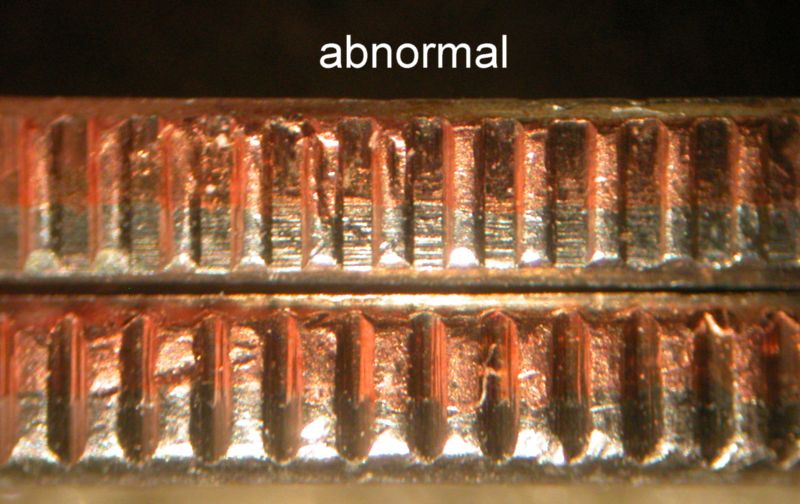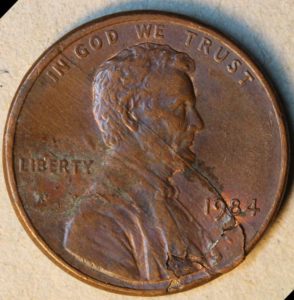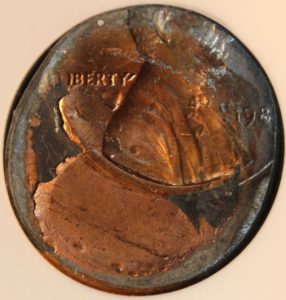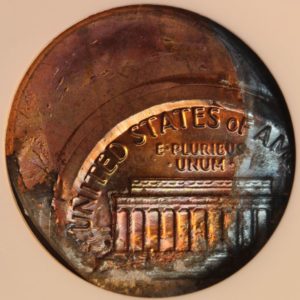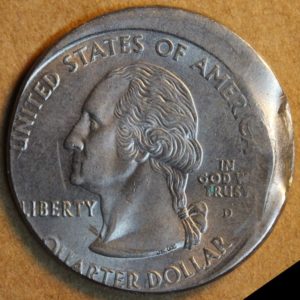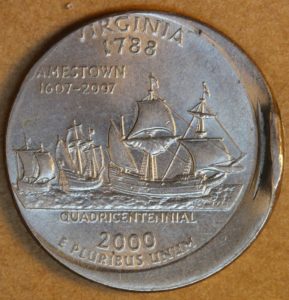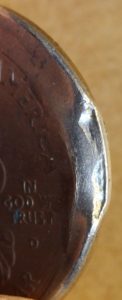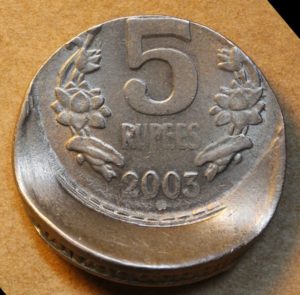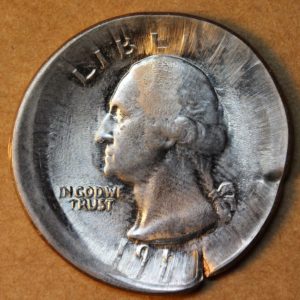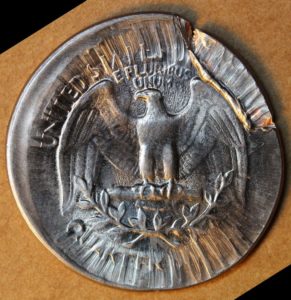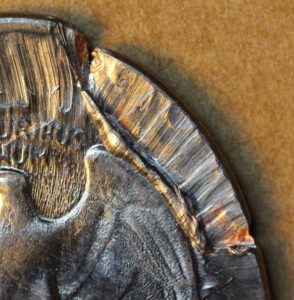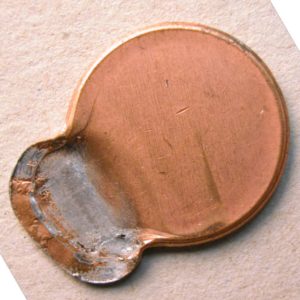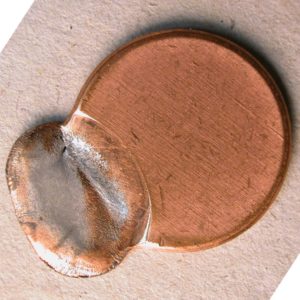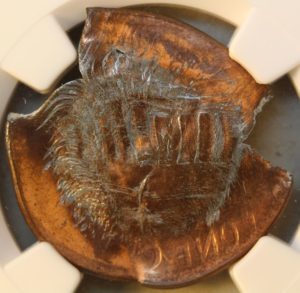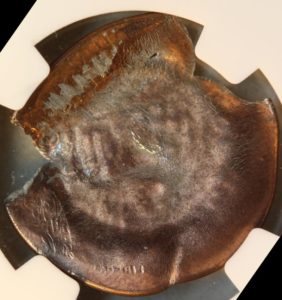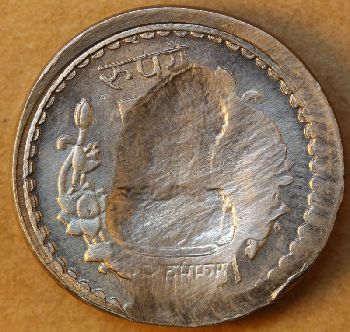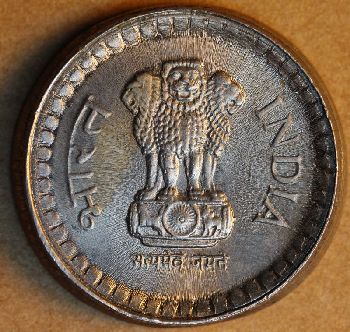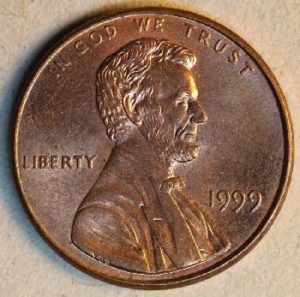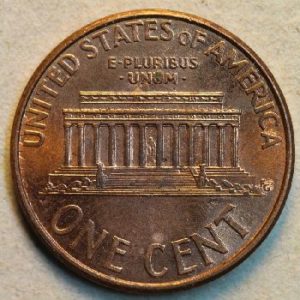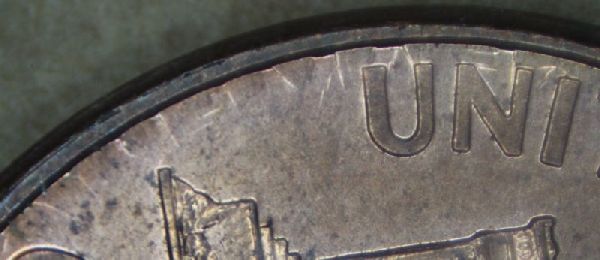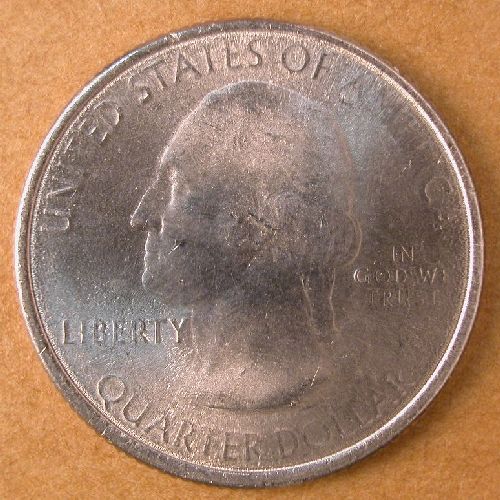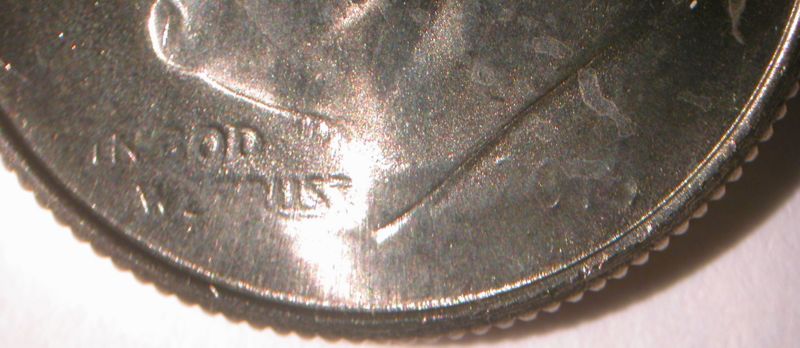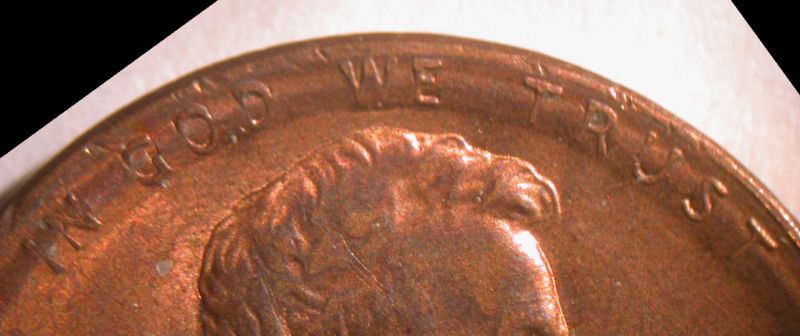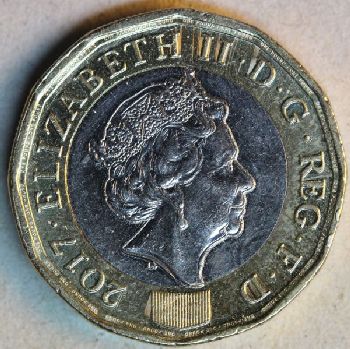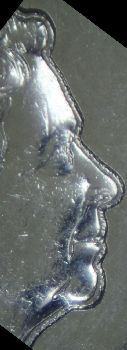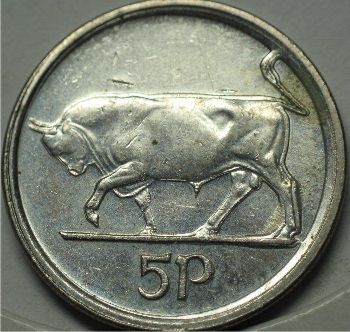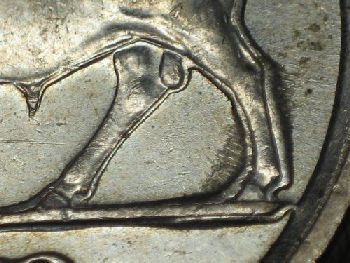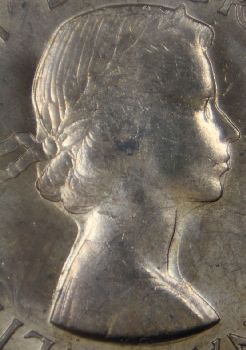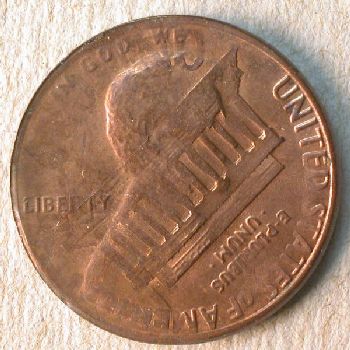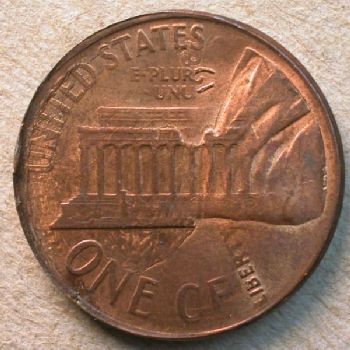Part IV. Die Errors:
Die Damage:
Collar damage
Definition: Mechanical damage affecting the working face of the collar. This damage can appear as scratches and grooves that are horizontally or vertically oriented.


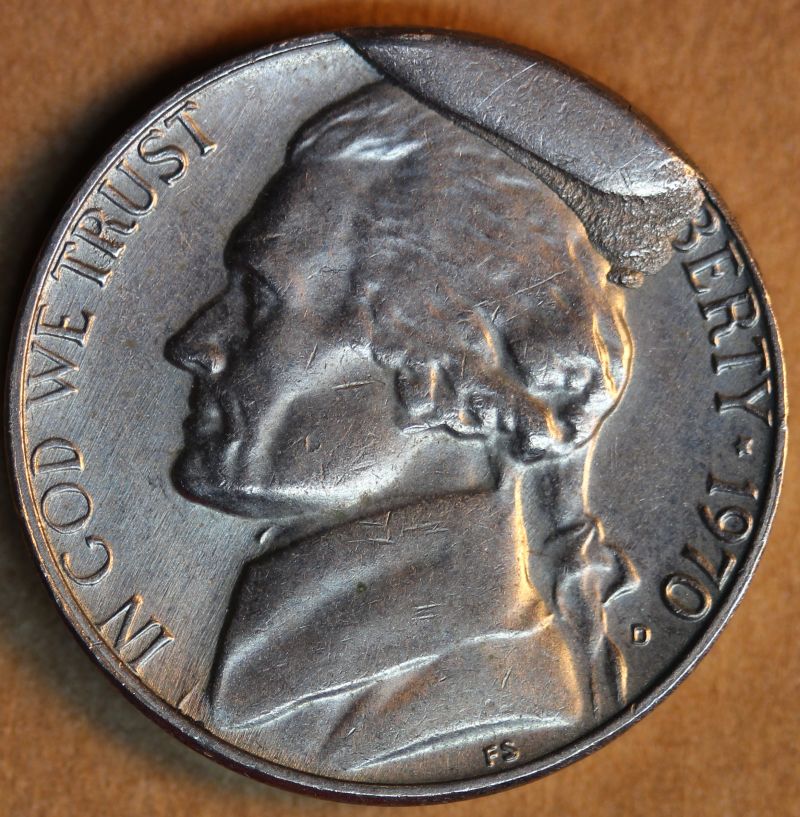
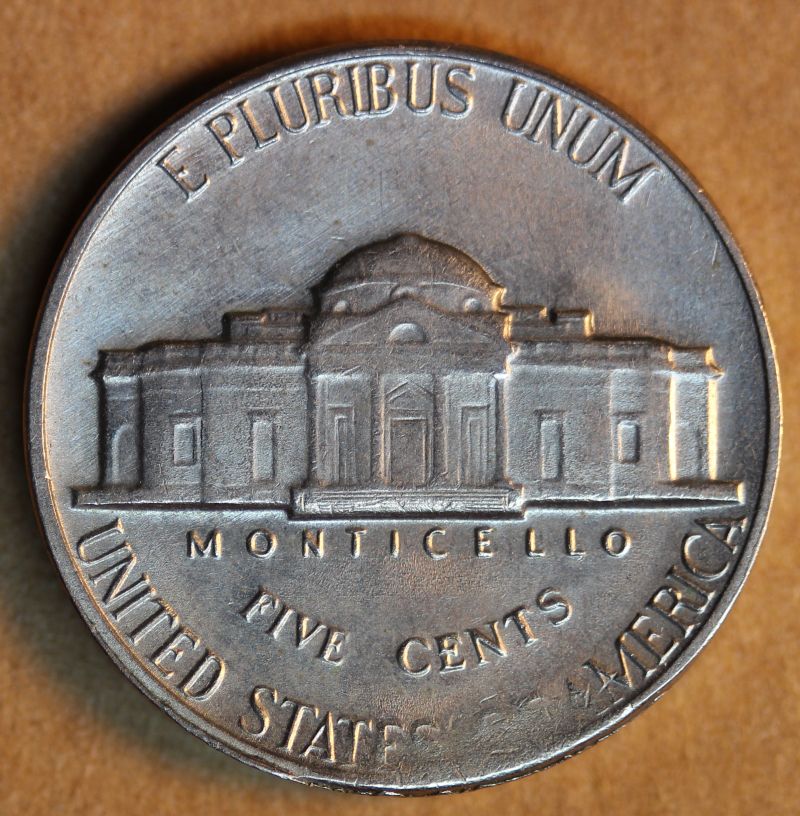
This 1970-D nickel features a sizeable cud (corner die break) on the obverse. The section of the edge next to the cud carries coarse vertical grooves that reflect damage to the collar. It’s possible that gritty debris derived from the collar break became trapped between the neck of the anvil die and the collar. Either that, or a collision with a foreign object that was responsible for the cud also caused that foreign object to shatter, with the resulting debris getting trapped between the die neck and the collar. Vertical movements of the anvil die relative to the collar ground the debris against the collar, generating the vertical grooves. Every nickel struck afterward carries the impression of that damage. The grooves on the nickel could be partly an impression of the damage and partly due to the nickel scraping against the damaged portion of the collar during ejection.
The upper member of these two 2008-P New Mexico quarter dollars displays unusually wide, flat valleys between the reeds, with the valleys carrying heavy horizontal scratches. This appearance reflects the fact that the ridges on the working face of the collar were abraded and truncated. Similar damage is known from other dates, including 2007-P Wyoming quarters. This damage may have been produced when the beveled entrance of the collar was being machined or de-burred. The rotating machine tool may have slipped into the functional portion of the collar, damaging the reeding.
